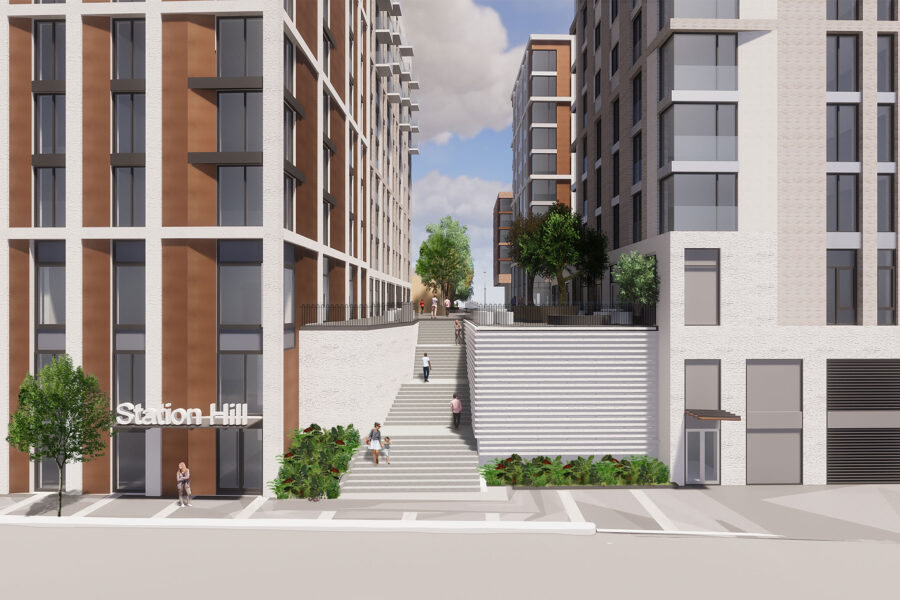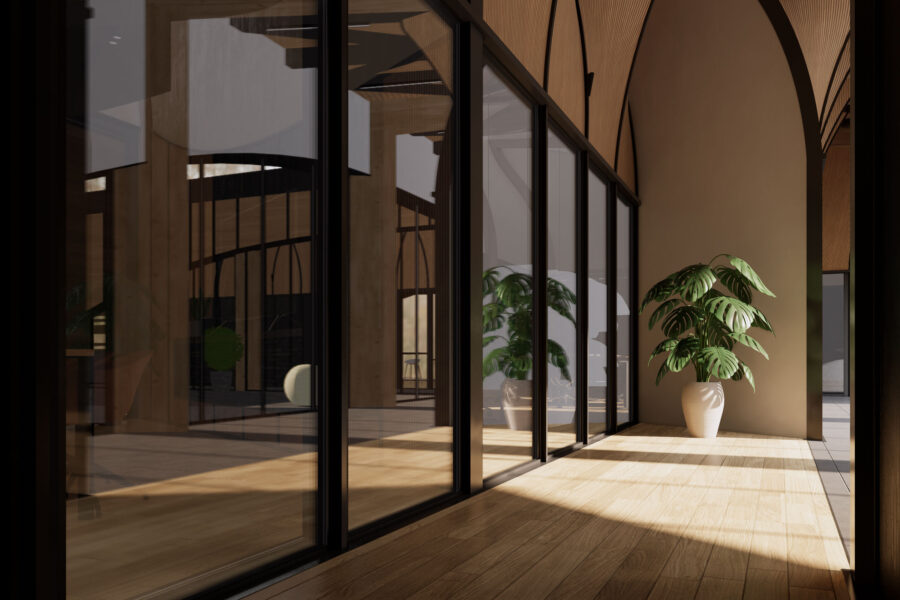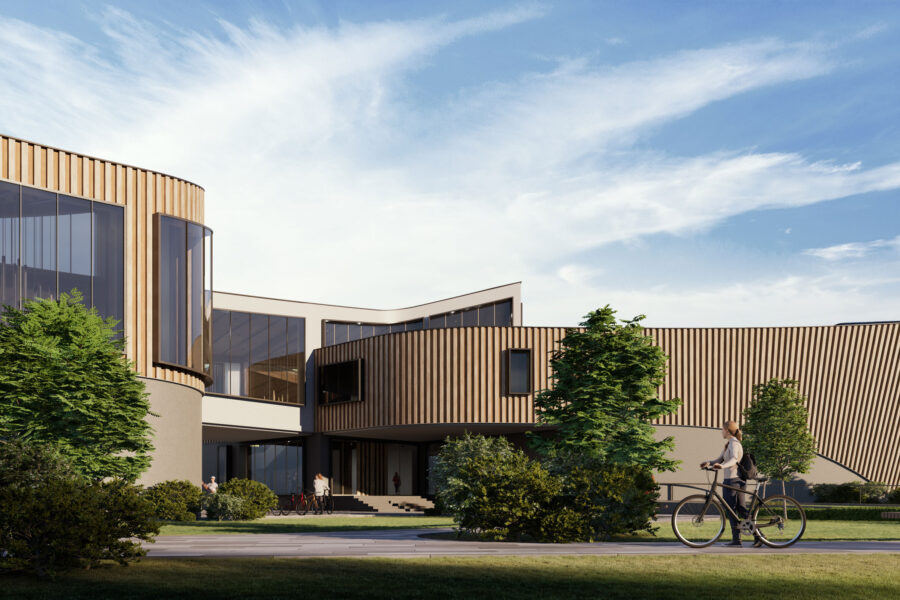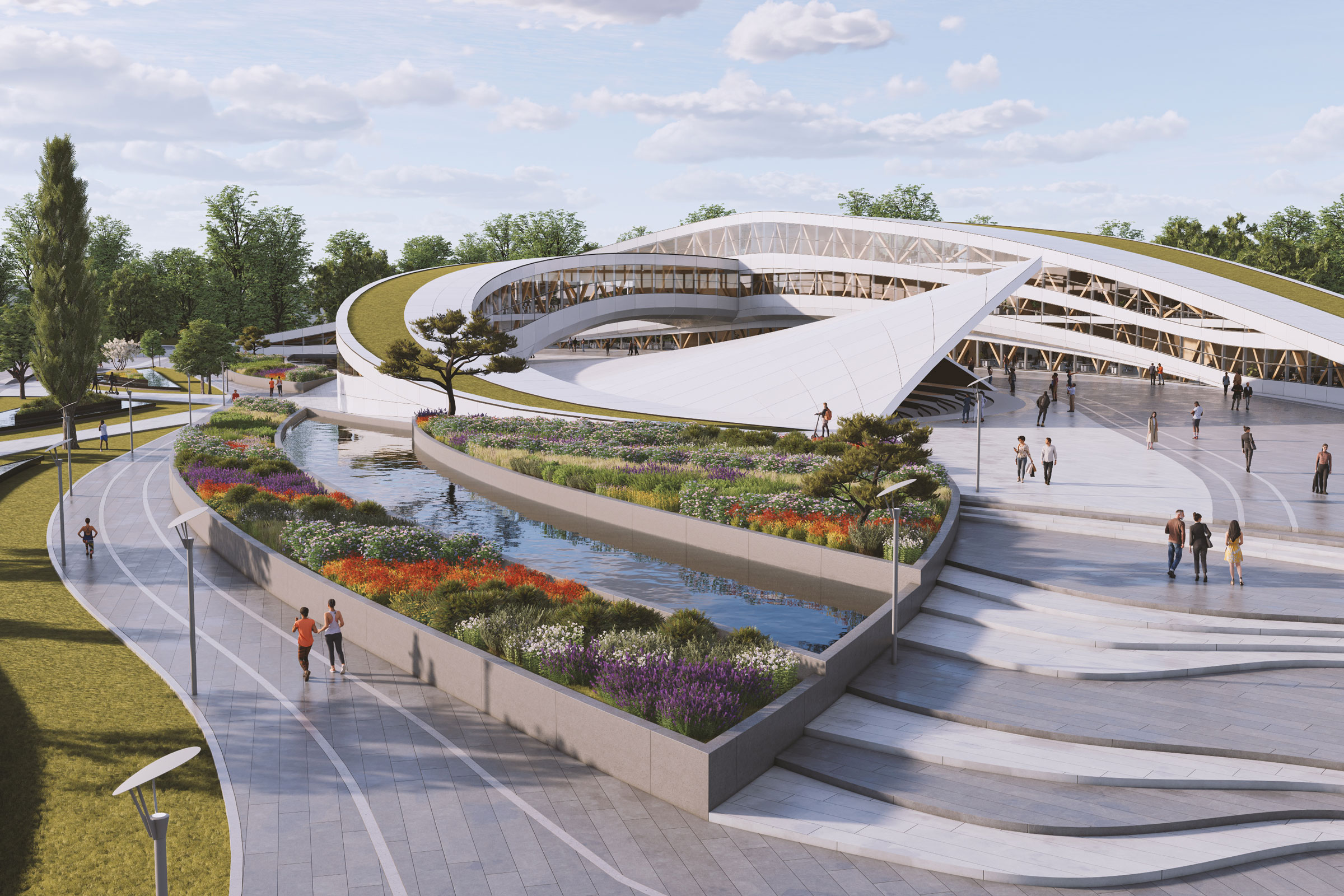Story at a glance:
- The AEC industry has seen significant transformation in the last 10 years—largely due to technological advancements in real-time visualization.
- Enscape’s variety of export modalities and sharing options make collaboration easy. Architects and designers can quickly iterate on designs and receive instant feedback.
Experiencing a project on a human scale. The biggest benefit of virtual reality and real-time rendering in architecture projects is now easier than ever to access, according to Andreea Lipan, product marketing manager at Chaos, the company behind Enscape.
Lipan’s role is focused largely on delivering new and improved functionalities for Enscape a few times each year. Her background in architecture and technology plus her passion for virtual reality (VR) keeps her interested in the evolution of this tech.
“With the integration of VR Enscape has democratized the perception of space—once a skill requiring extensive training in geometry and sketching. Now accessible instantly through a VR headset, individuals can perceive architectural designs with the acuity of an architect,” she says.
The AEC industry has seen significant transformation in the last 10 years—largely due to technological advancements in real-time visualization that revolutionized the design process along the way. “This innovation enables AEC professionals to explore ideas rapidly, create lifelike visualizations instantly, and conduct immersive virtual reality walkthroughs,” Lipan says. “Architectural firms worldwide now engage in design and communication more intuitively, creatively, and collaboratively, thanks to the seamless integration of real-time visualization software with 3D modeling applications.”
Arcadis—which recently combined with CallisonRTKL and IBI Group to form a multidisciplinary firm with 36,000 employees—uses technology like this every day for its sustainable design, engineering, and consultancy solutions.
“As a culture we’ve all gotten so much more visual with things like Instagram and TikTok. Our attention spans are shorter, and being able to showcase projects quickly and give people an overview, you can really share the story so much quicker without having to walk people through a potentially dense presentation or show them a series of plans that may be hard for the average person to interpret,” says Caoimhe Loftus, digital lead at Arcadis.
Real-Life Examples

The visuals for the Station Hill project, designed by Arcadis, came to life through a combination of Revit, SketchUp, and Enscape. Photo courtesy of Arcadis
Loftus points to the Station Hill South project in Reading in the UK, in which the first of three phases has been completed and residents moved in. The project could ultimately deliver up to 1,300 new homes in Reading when complete. “It’s this huge, multiphase project,” Loftus says. “The visuals were so important to really sell and share the vision that was created. That was a collaborative effort between ourselves, Gensler, and Lincoln MGT really coming together to unlock that proposal and make that project happen on a site that had been derelict for quite a long time.”
The visuals for the Station Hill project came to life through a combination of Revit, SketchUp, and Enscape. Loftus says she and the team often use technology like Enscape alongside SketchUp or Revit to get real-time renderings. It’s something she simply couldn’t get at the start of her career, she says. “You needed slightly more elaborate rendering programs, whereas this is, at least at the basic level, more of a click-of-the-button solution that can be refined, and that’s great. You can export panoramas. I’ve even loaded this onto headsets to immerse myself in the scene to see what the project feels like.”
While that kind of immersion simply wasn’t available 10 years ago, the cost of this type of tech has fallen, and the power of computers has improved—and so has access. Loftus says these tools very clearly improve projects. Not only are teams able to collaborate more easily, but the different tech programs work together seamlessly, too. For architects already using design applications like Revit, SketchUp, Rhino, ArchiCAD, or Vectorworks to model buildings, Enscape is a very easy-to-learn plugin, Lipan says.
Enscape’s variety of export modalities and sharing options make collaboration easy, facilitating seamless communication among design teams. Architects and designers can quickly iterate on designs and receive instant feedback.
Capabilities

“This immersive experience empowers the design team to conduct design evaluation and iteration with unprecedented intuition and depth. Through real-time interaction with their designs, they can identify flaws, assess design decisions, and implement adjustments while experiencing the space firsthand,” says Chaos’ Andreea Lipan. Rendering courtesy of Chaos
Enscape is the only real-time plug-in solution with 100% direct integration. Architects and designers leverage the bi-directional data exchange between the 3D model and the renderer to enhance their day-to-day design decision operations. “Any changes made in the rendering window are synced back to the 3D model and vice-versa, maintaining one single source of truth and having one project. Because of this, Enscape has evolved rapidly into a mission-critical workflow solution,” Lipan says.
Before Enscape, visualization was a separate workflow from the design process; the design process needed to stop for 3D artists to create a visualization. Now designers no longer need to export and import different file formats. “It also eliminates the need for adjusting complex rendering settings to get high-end outputs, making the design process faster and more efficient than ever,” Lipan says.
Fulton Trotter Architects also used Enscape’s real-time renderings while working remotely during Covid. It saved them time and improved communication around a North Sydney Public School project in Australia. “Being able to show the clients high-quality images to sell our design to them was really critical as part of that process,” the architecture firm told Enscape. Lipan says Enscape helps architecture firms reach design decisions more quickly and easily. “It’s easy to use, and it’s very cost-effective. Architects don’t have to learn a new tool, so it’s easy to onboard them,” she says. “They model the building and instantly get visualization. They get a 3D walkthrough. They get videos of the project they are working on.”
Enscape’s Light View mode provides architects with valuable insight into how much natural light is hitting various surfaces, shown as a heat map, allowing for informed decisions on daylighting strategies. Enscape also enables the creation of solar studies by adjusting the position and angle of the sun while considering geolocation and time of year settings from the design application. Architects can quickly visualize and analyze the impact of solar angles and rotations on their designs, helping to maximize passive and cooling opportunities while reducing reliance on artificial lighting and heating sources.
In 2023 Enscape began a new journey of expansion and innovation, introducing a range of new functionalities to enhance its already robust feature set. Among the notable additions were adjustable assets and scanned people, enriching the user experience with greater customization and lifelike realism. “These enhancements allow users to fine-tune elements within their designs and populate scenes with realistic human figures, adding depth and authenticity to architectural visualizations,” Lipan says. She says Enscape also made significant strides in rendering quality with new advances in Global Illumination technology. “This improvement elevates the realism of rendered scenes, enhancing indirect lighting accuracy and overall visual fidelity to create more realistic environments.”
There is also new support for macOS, widening accessibility for a broader user base.
The Future is Here

“Enscape’s VR is a game-changer in the design process, as it offers architects, designers, and clients a profound understanding of scale, proportion, and spatial relationships within the built environment,” says Chaos’ Andreea Lipan. Rendering courtesy of Chaos
Enscape’s VR capabilities alleviate confusion and enhance understanding of projects, Lipan says. “By immersing themselves in the virtual environment, clients can explore proposed projects comprehensively and use real-time feedback to make informed decisions about design elements, materials, and spatial configurations. This eliminates misunderstandings that often arise from 2D documentation or static images, allowing clients to visualize projects effectively and participate actively in the design process.”
Lipan expects improved realism and enhanced interactivity as more people adopt cloud-based solutions and hardware capabilities advance. This is already happening to an extent with Chaos Vantage, which can deliver photorealistic visuals in real-time, but Lipan imagines new technology could create even more exciting and dynamic workflows.
“Cloud-based rendering will democratize access to high-quality rendering, while AI integration optimizes workflows and enhances image quality. Cross-platform compatibility will facilitate seamless transitions between devices, and real-time collaboration tools will revolutionize teamwork and communication among distributed teams,” she says.

